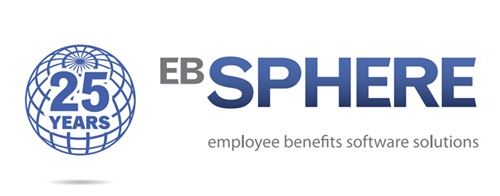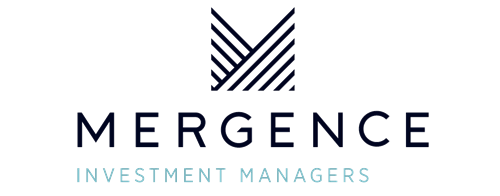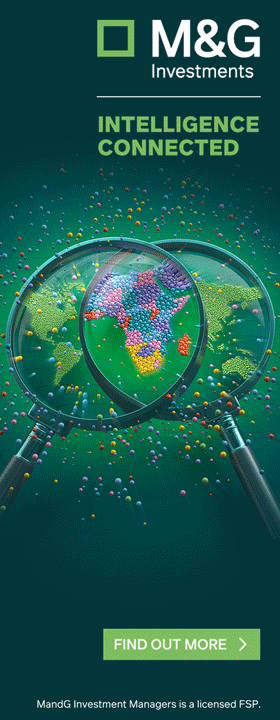Grant Webster, Alan Siow, Matt Christ, Varun Laijawalla & Jaspal Boparai, from Ninety One
There has been a marked shift in perspective among asset allocators this year. As risks in developed markets become harder to ignore, portfolio diversification has become a key concern for investors. This is giving rise to a more robust assessment of global asset classes, with emerging markets increasingly in focus.
The strong structural emerging markets (EM) story is not new: EM accounts for 86% of the world’s population, 61% of global GDP, and the bulk of global economic growth potential. Yet cyclical challenges have held back EM asset-class returns for over a decade. Today, EM assets remain under-represented in global investment portfolios – making up just 9% of equity and 18% of bond allocations – but many asset allocators are beginning to question this imbalance.[1]
Resilience rising: reform, ratings and renewed flows into EM
Closer scrutiny of the future of ‘US exceptionalism’ is causing capital to flow south and east in search of diversification. In tandem, rising fiscal pressure and heightened political uncertainty in developed markets (DM) are challenging traditional assumptions about ‘risk-free’ assets, while EM assets are outperforming – underpinned by credible policymaking and improving fundamentals. After a tough decade, the outlook for EM assets is more promising, risk is often mispriced, and opportunities abound across EM asset classes.
Grant Webster, Co-Head of EM FX & Sovereign: “Emerging markets have been through a long period of economic restructuring and reform. The result is stronger fundamentals at both the macro and micro level. We’re seeing clear evidence of this in market resilience to tariff announcements and other shocks, and the steady rise in sovereign credit ratings across the global EM universe provides further confirmation. On top of this structural strengthening, some of the cyclical forces that supported the prolonged strength of the US dollar – a headwind for EM assets – are beginning to fade.”
In contrast to the improvements taking place across emerging markets, several developed economies are showing characteristics historically associated with emerging markets – including rising debt burdens, mounting fiscal concerns, and increased policy uncertainty – and this is reflecting in higher bond-market volatility. Webster said: “Traditional EM/DM distinctions are looking increasingly outdated as the lines between the two asset classes are blurring. Today, despite the ‘EM economy’ having lower debt levels than its DM counterpart and its current account being in surplus (the DM economy is in deficit), EM bond yields are 70%[2] higher. There are signs that capital is beginning to move accordingly.”
EM corporate credit: a market coming of age
The EM corporate credit market is also undergoing positive change – supported by robust balance sheets, strong governance, and the deepening of local markets. This increasingly mature asset class is double the size of the US high-yield market, and many asset allocators have been reassessing the relative merits of each this year.
Overall, EM corporate debt issuance across EM ex-China is on track for record levels in 2025 and with issuance accelerating in the Middle East and Latin America while moderating in Asia, the asset class is becoming more globally diversified.
Alan Siow, Co-Head of EM Corporate Debt: “Companies are issuing into supportive demand, and they increasingly have the option to raise capital domestically, which reduces reliance on external borrowing and contributes to more resilient balance sheets. Meanwhile, for the third year in a row, EM companies are redeeming more debt than they are issuing – we see a healthy and well-balanced supply picture in EM corporate credit.”
Structural themes at play in the EM corporate debt market include the growing entry of Middle Eastern markets into the flagship index (JPMorgan CEMBI) – economies that are diversifying away from hydrocarbons and increasingly looking to tap global markets. And with emerging markets at the heart of the global energy transition, there is an abundance of opportunities to pursue compelling returns while making a positive contribution to global net-zero goals. More broadly, corporate fundamentals are improving steadily, and the asset class continues to incorporate a meaningful ‘postcode premium’, whereby country-specific concerns keep EM corporate spreads wider than DM peers despite robust underlying fundamentals. The potential for idiosyncratic stories to impact broader market volatility – as seen in Brazil this year – remains a defining feature of this asset class and this can make valuations for fundamentally strong issuers’ bonds even more attractive.
Risk in private markets: safety in the less familiar
A shift in focus towards less-explored areas is also in evidence in private markets. The asset class has been a regular feature of news headlines in recent months, with high-profile failures in the US market revealing the extent to which loan-structuring standards have eroded and lender protections have weakened, often in asset-light industries. In contrast, in the relatively underpenetrated EM private credit market, investors can access EM-level spreads on structures that look more like the DM private credit market that originally attracted investors 15 years ago. That’s starting to put the asset class on investors’ radars.
Other reasons why EM private debt appears poised for a bigger profile on the global financial landscape are its powerful diversification benefits and the exposure to structural growth themes it provides. These include rapid urbanisation, infrastructure development, and the global energy transition – where the declining cost of green energy generation continues to underpin the commercial rationale and investment return potential of decarbonisation.
Matt Christ, Portfolio Manager, Emerging Market Transition Debt: “This is an exciting time for EM private credit and infrastructure investments. We’re seeing an abundance of opportunities across sectors and countries – from energy generation to digital infrastructure and from Turkey to Brazil. Significant barriers to entry mean skilled investors can be highly selective in terms of borrowers and conservative with respect to structures while still pursuing compelling returns.”
Typical deals in this field reveal a surprisingly strong risk/return trade-off: an absence of ‘covenant-lite’ structures; familiar legal backdrops (UK or US governing law); low loan-to-value ratios; and strong developed market links, with major sovereign wealth funds starting to tap into these commercial investment opportunities and many EM borrowers’ operating assets residing in developed markets.
EM equities: A compelling set up
The defining characteristic of the EM equity market this year is change on multiple levels. This is creating supportive conditions for the asset-class outlook.
The first key change relates to US equity market leadership, a key theme in financial markets for the past 15 years. This has eroded, with EM equity market returns significantly outpacing their developed market peers this year. In addition, the dollar’s long bull run appears to be at or near an end. Finally, major positive shifts are taking place within emerging markets. These include South Korea’s drive to fix persistent poor governance and Chinese policymakers’ renewed engagement with the private sector. Coupled with confirmation at the start of the year, most visibly through the launch of DeepSeek, that innovation remains vibrant in China, these developments have eased fears that regulation had choked off growth and has renewed investor interest in China.
Varun Laijawalla, Portfolio Manager, Emerging Markets Equity: “The set-up in EM equities has not looked this positive for 15 years. Perhaps the most compelling case for the outlook relates to the reversal of a key long-term headwind: market dilution. It is this – rather than fundamentals – that has driven underperformance in recent years, as a wave of Chinese IPOs came to market at elevated multiples. Over the past three years, net issuance from China has fallen precipitously, and we’ve seen a big behavioural shift at the corporate level, as reflected in record buybacks and dividends. As companies respond to the uncertain geopolitical and macro backdrop and take back control of their capital, a major headwind is morphing into a tailwind.”
A further trend across EM equities is the ongoing rise in dispersion, as evidenced by increasingly varied performance of market constituents across several metrics. That supports the case for an active approach to investing.
Looking ahead: opportunity, risk and reality in EM
Analysis from Ninety One points to a favourable outlook for emerging markets across equities, local-currency debt and hard-currency bonds. Stronger fiscal positions, diversified sources of growth and a global shift in supply chains are reshaping long-term strategic asset allocation. Jaspal Boparai, Co-Head of Institutional, UK: “Emerging markets are central to many of the themes that will define the global economy in the coming decade – from the energy transition and infrastructure modernisation to the technologies that support artificial intelligence. These are structural shifts with far-reaching implications for long-term returns.”
As developed markets navigate rising debt, persistent inflation and increased political uncertainty, capital is increasingly rotating toward markets offering stronger fundamentals, higher real yields and more credible policy frameworks.
Conclusion
Across sovereign credit, corporate debt, private markets and equities, the message is clear: emerging markets deserve to move from the periphery to a more central position in portfolios. With reform momentum, economic resilience and structural growth drivers firmly in place, emerging markets are increasingly relevant for global investors.
ENDS
[1] Population and GDP based on PPP breakdowns are from the IMF as at June 2025. Equity / Debt ownership is based on active and passive allocations tracked by Broadbridge as at Q4 2025.
[2] Source: IMF October 2024 WEO, JPMorgan benchmarks, Ninety One calculations. DM covers 13 Developed Markets in the JPMorgan GBI Benchmark. EM covers 19 Emerging Markets in the JPMorgan GBI-EM. Where applicable, data is weighted by GDP. Returns from March 2020 to February 2025. Volatility of monthly returns. Yields as at end July 2025.

























































































